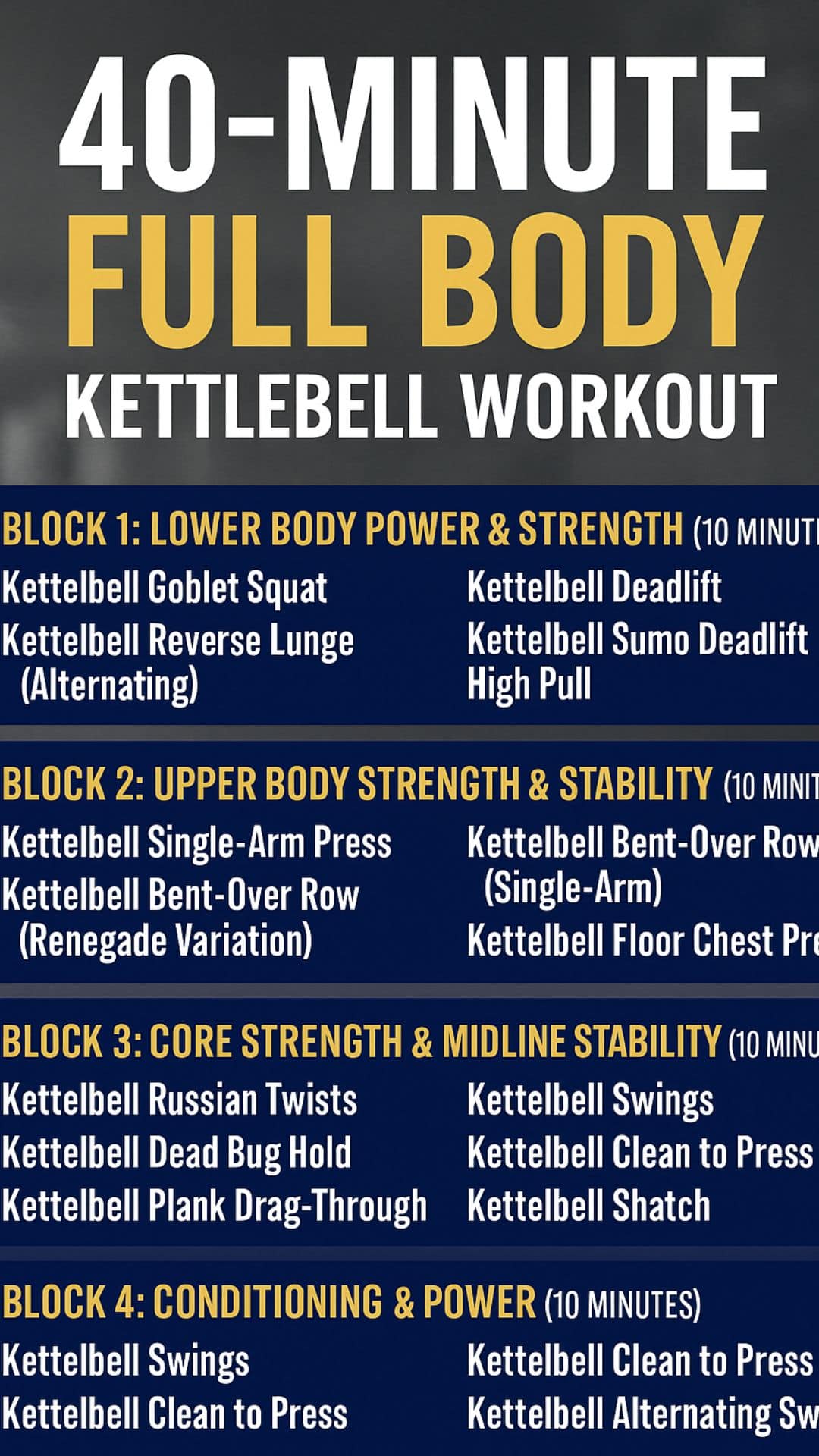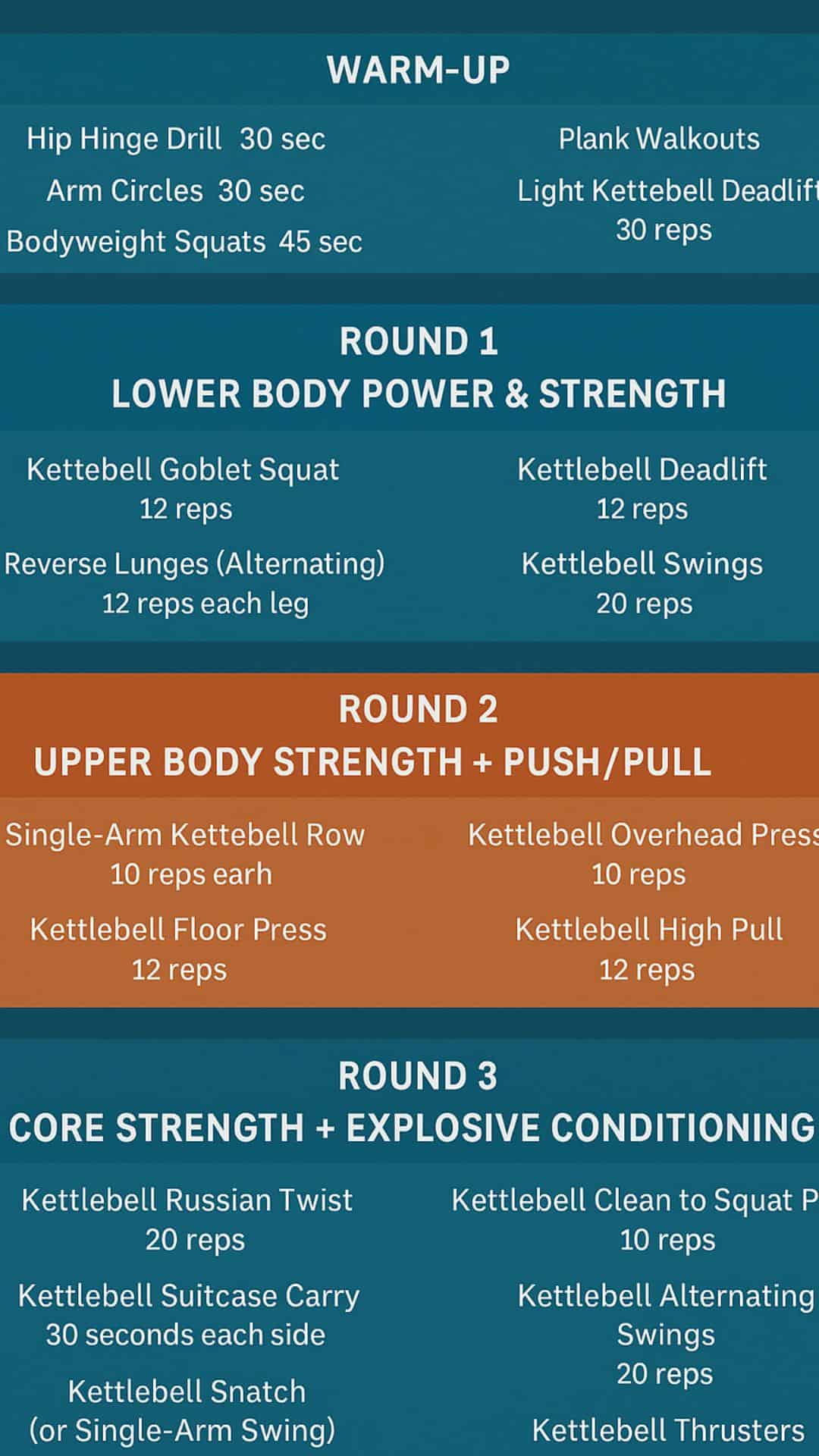
45 Minutes to Fit: A Full-Body Kettlebell Workout for All Levels

40-Minute Full-Body Kettlebell Workout (Build Muscle, Burn Fat)

30-Minute Kettlebell Workout for Total-Body Strength

25-Minute Full Body Kettlebell Workout for Strength & Fat Loss
Low Intensity Exercises The Underrated Fitness Solution

When we talk about exercise, many men immediately envision high-intensity workouts like weight lifting, CrossFit, or sprinting. While these forms of exercise certainly have their benefits, low-intensity workouts are an often-overlooked but equally valuable component of a balanced fitness regimen. Here’s a closer look at low-intensity exercises and why they deserve a spot in your workout routine.
Low Intensity Exercises for Men The Underrated Fitness Solution
What Are Low Intensity Exercises?
Low intensity exercises, often referred to as “LISS” (Low-Intensity Steady State), involve activities performed at a steady pace and low intensity over a prolonged period. Some common examples include walking, cycling at a leisurely pace, and swimming.
Why Should Men Consider Low Intensity Exercises?
Injury Prevention: High intensity workouts can sometimes lead to injury, especially if not done correctly. Low intensity exercises, on the other hand, place less strain on the joints and muscles, reducing the risk of injury.
Better Heart Health: LISS workouts can increase cardiovascular endurance by strengthening the heart. This can lead to a decreased risk of heart-related illnesses, one of the leading causes of death among men.
Stress Relief: Exercising at a slower pace can be incredibly meditative and calming. It can act as a therapeutic activity, helping men deal with daily stresses and anxieties.
Recovery: Low intensity exercises can serve as an active recovery from more intense workouts. They help in muscle repair without further straining them.
Burns Fat: Contrary to popular belief, low intensity workouts can effectively burn fat. The body tends to use fat as its primary energy source during prolonged, low-intensity activities.
Popular Low Intensity Exercises for Men
Walking: The simplest yet one of the most effective low intensity exercises. Whether it’s a stroll in the park or a long hike in nature, walking can provide numerous health benefits.
Cycling: Not every bike ride has to be a race. Cycling at a steady, moderate pace can be both enjoyable and beneficial for health.
Swimming: Swimming is a full-body workout that is easy on the joints. Swimming at a leisurely pace can provide both relaxation and cardiovascular benefits.
Yoga: While not always considered a traditional workout for men, yoga can improve flexibility, reduce stress, and provide a gentle workout.
Tai Chi: This ancient Chinese martial art focuses on slow, deliberate movements. It’s great for balance, flexibility, and mental well-being.
Tips for Incorporating Low Intensity Exercises into Your Routine
Set Clear Goals: Understand what you aim to achieve. Whether it’s weight loss, stress relief, or improving cardiovascular health, having clear objectives can keep you motivated.
Combine with High-Intensity Workouts: Balance is key. If you’re already doing high-intensity workouts, supplement them with a few low-intensity sessions a week.
Stay Consistent: Just because it’s low intensity doesn’t mean you can skip sessions. Consistency is crucial to reap the benefits.
Listen to Your Body: Ensure you’re not straining yourself. If you feel any discomfort, it might be a good idea to slow down or consult a fitness expert.
Stay Hydrated: Just because you’re not sweating as much doesn’t mean you don’t need hydration. Drink plenty of water before, during, and after exercise.
The Science Behind Low Intensity Exercises
To appreciate the value of low-intensity exercises, it’s essential to dive deeper into the science behind them. At the heart of this is the understanding of energy systems.
Energy Systems and Exercise Intensity
Our body primarily uses two energy systems during physical activity: the anaerobic system and the aerobic system. High-intensity workouts, like sprinting or weight lifting, largely depend on the anaerobic system. On the other hand, the aerobic system fuels prolonged activities, such as walking or leisurely cycling. This system taps into fat stores for energy, leading to an efficient fat-burning process over extended periods.
The Benefits of Training Aerobically
Improved Endurance: Regular low-intensity workouts enhance the efficiency of the heart, lungs, and vascular system, resulting in better stamina and endurance for other physical activities.
Mental Clarity: Aerobic activities increase blood flow to the brain, promoting better cognitive function and focus.
Hormonal Balance: Low-intensity exercises can help in the balance of hormones, especially in reducing cortisol levels, the stress hormone.
Finding the Right Balance: High Intensity vs. Low Intensity
While this article champions low-intensity exercises, it’s important to understand that both high and low-intensity workouts have their respective places in a holistic fitness regimen. Here’s how they complement each other:
Comprehensive Muscle Engagement: High-intensity exercises typically target fast-twitch muscle fibers, which are responsible for short bursts of strength and speed. Low-intensity workouts engage slow-twitch fibers, which sustain longer periods of activity. Engaging both types of fibers ensures comprehensive muscle development.
Avoiding Burnout: Alternating between high and low-intensity sessions can prevent mental and physical burnout. It provides variety, which can be refreshing and motivating.
Metabolic Boost: While HIIT (High-Intensity Interval Training) can provide a temporary boost to metabolism, the sustained fat-burning nature of low-intensity exercises ensures that the body continues to burn calories even post-workout.
Incorporating Variety in Low Intensity Workouts
Sticking to just one form of low-intensity exercise can become monotonous. Here’s how to add variety:
Nature Walks and Hikes: Explore local parks, forests, and trails. It provides an opportunity to connect with nature and offers varied terrains that can challenge you differently each time.
Rowing: Apart from being an excellent full-body workout, rowing at a steady pace can be a great low-intensity exercise.
Dancing: While it might surprise some, slow dancing or even certain forms of cultural dances can serve as effective low-intensity workouts.
Pilates: Focusing on core strength and flexibility, Pilates offers a gentle yet effective workout for those looking to steer clear of high intensity.
Group Classes: Joining group classes focused on activities like Tai Chi, yoga, or aerobics can add a social component, making the process more enjoyable.
With the added insights into the science behind low-intensity workouts and the intricate balance they strike with high-intensity sessions, it’s evident that a well-rounded fitness routine needs a combination of both. The complementing benefits of these workouts ensure not only physical well-being but also mental and emotional balance.
In a world that often equates intensity with effectiveness, it’s essential to remember that slower, steady activities can offer profound, long-lasting benefits. As you continue on your fitness journey, make room for low-intensity exercises and enjoy the myriad of benefits they bring. Whether you’re looking to stay active, recover from an intense session, or simply find peace in movement, low-intensity exercises might just be the answer you’ve been searching for.
Most Recommended
Subscribe to our Newsletter
Stay up to date on the latest men’s health, fitness and lifestyle trends and tips.
About Us
Men’s Fit Club was started with the goal of empowering men to get the most out of their lives. This meant going beyond exercise and diet tips to really address the broad range of issues that men face on a daily basis – topics like recreation, finding love, sexual health and even sound fashion advice.
Quick Links
© COPYRIGHT MEN'S FIT CLUB 2025. All Rights Reserved

